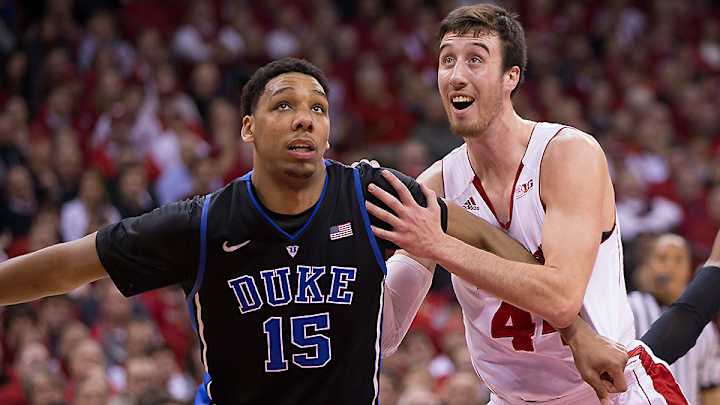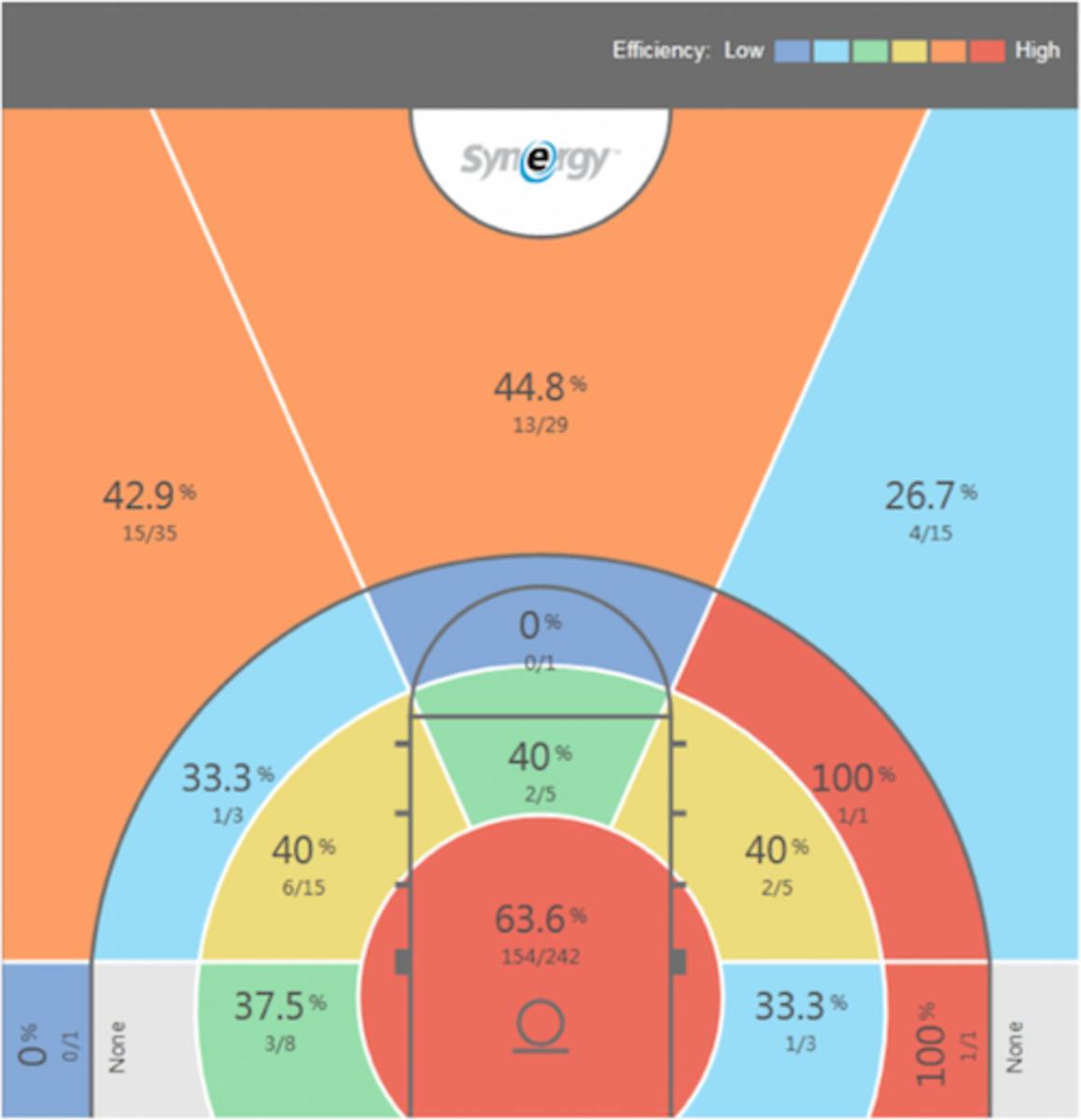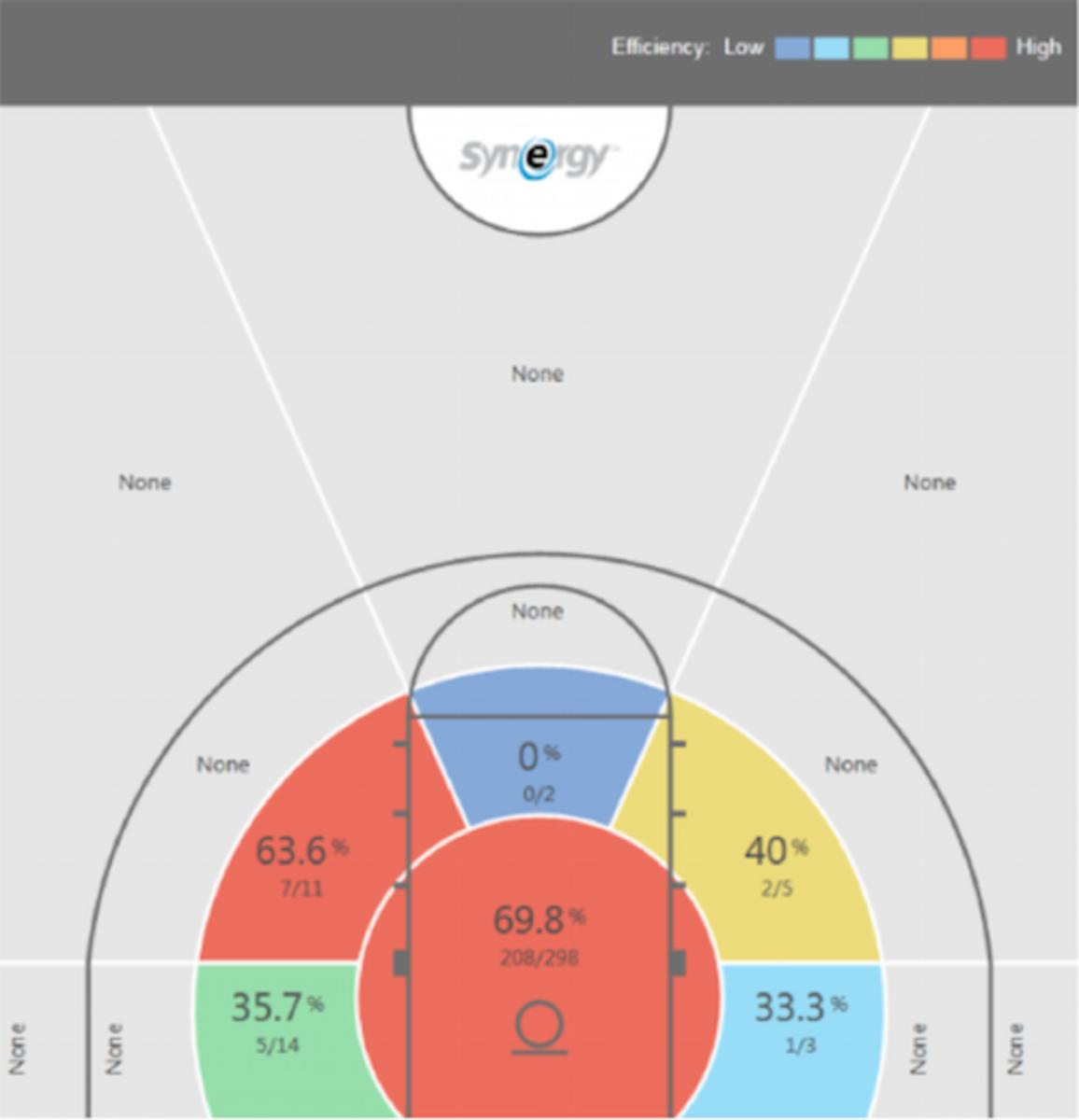Wooden Watch: Kaminsky on Okafor, Okafor on Kaminsky & the final vote

We began the Wooden Watch nearly 100 days ago. The season was almost a month old at that point, but we thought it best to wait until Jahlil Okafor and Frank Kaminsky had faced off before getting started. After all, we knew the race would likely come down to Duke’s All-America freshman and Wisconsin’s rising-star senior. In that Dec. 3 showdown, Kaminsky won the personal matchup, scoring 17 points and grabbing nine rebounds to Okafor's 13 and six, but the Blue Devils won the game, beating the Badgers by 10. The next day, the Wooden Watch debuted with Kaminsky at No. 1 and Okafor at No. 2, and though that order was occasionally reversed, those two never failed to be the top players in our rankings.
[daily_cut.college basketball]Now, with conference tournaments underway in earnest and Selection Sunday just days away, we’re ready to endorse one candidate for the award. But first, let’s compare them one final time in this column—and let them cast their votes.
At season’s end, Kaminsky is edging Okafor in points (18.4 per game to 17.6), assists (2.6 to 1.5) and blocks (1.6 to 1.4). Okafor has the rebounding advantage (9.2 to 8.1), but also commits more turnovers (2.7 to 1.6). Using tempo-free metrics, Kaminsky has the edge as well. He’s using 28.1% of his team’s possessions and 28.3% of its shots with an offensive rating of 126.7, according to kenpom.com. Okafor is using 27.5% and 25.4%, respectively, with an o-rating of 117.2.
Still, despite their similar offensive statistics, it has been difficult at times to compare the two. They are such disparate players. Kaminsky is a stretch-four in a center’s body. He can lead fast breaks, play on the perimeter and knock down three-pointers. Take a look at his shot chart and see how efficient he is across the court:

As my colleague Luke Winn has detailed throughout the season in TankShots™, Kaminsky is extremely efficient in his shot selection. He either shoots a three from his sweet spots on the right side of the court, or he posts up or scores from within five feet of the rim.
Winn spoke to both players recently for a pair of upcoming stories in Sports Illustrated. “He's an amazing player and it was tough guarding him,” Okafor said. “He's definitely the best player in the country. it was a lot of fun playing him.”
Okafor, meanwhile, is a true back-to-the-basket center. He battles for—and most often wins—position before he even receives the ball. And when he does, he has a full arsenal of post moves to finish.

The most impressive part about Okafor’s shot chart: Not only has he avoided taking a single three-pointer all season, he also hasn’t even taken a long two!
“Just because he's so big and so skilled, it's kind of hard to keep the ball out of his hands, he's going to find a way to get it,” Kaminsky told Winn. “I'd do whatever I could to make it difficult for him in the post—but at his size that's not an easy task.”
Defensively, Kaminsky also has a slight edge. Synergy Sports’ statistics say that Kaminsky defends more possessions per game, and yet still allows fewer points per possession (0.68) than Okafor (0.86). Kaminsky is also better in post-up situations, giving up 0.77 points per possession to Okafor’s 0.84.
The eye test backs up Kaminsky’s advantage as well. Okafor often appears lost more than 15 feet outside the basket and isn’t overly intimidating in the post either. In defense of his defense, though, Duke really needs Okafor to stay out of foul trouble. The Blue Devils only have eight scholarship players, and they don’t want to have any game, especially not an NCAA tournament game, in the balance without their best player on the floor.
Perhaps more importantly than any of the numbers, Kaminsky and Okafor represent two opposite—and equally important—ends of the college basketball spectrum. Kaminsky was a minor recruit who didn’t emerge for Wisconsin until the end of his junior season. Now he’s likely played his way into the NBA draft lottery. Okafor had been the No. 1 player in his class seemingly since middle school, and he’s backed up that lofty status at this level. In June, he’ll likely be the No. 1 player selected.
Only one of them, however, can win the Wooden Award.
So who would Jahlil Okafor vote for?
“[Kaminsky] would have my vote,” he says. “I have a lot of respect for what he’s done, especially for college basketball, giving up the opportunity to go to the NBA to stay another year in college to finish out his career at Wisconsin—I have a lot of respect for that.”
Kaminsky similarly praised Okafor, but with one caveat.
“I’d vote for Jahlil,” he says. “He’s had such a great career so far—he’s having a great season. To come in and make such a big impact so soon—he means so much to his team. He’s such a skilled player, so he has my vote. If I can’t vote for myself.”
But if he could vote for himself, would he?
“Why not?”
Aside from Kentucky’s chase for perfection, the battle between Kaminsky and Okafor has been college basketball’s most fascinating storyline. In the end, though, Kaminsky has proved to be the better player on both ends of the floor, and he deserves to take home the Wooden Award.
The Final Top 10:
1. Kaminsky
2. Okafor
3. Delon Wright, senior guard, Utah
4. Jerian Grant, senior guard, Notre Dame
5. D’Angelo Russell, freshman guard, Ohio State
6. Seth Tuttle, senior forward, Northern Iowa
7. Karl Towns, freshman center, Kentucky
8. Willie Cauley-Stein, junior center, Kentucky
9. Kyle Wiltjer, junior forward, Gonzaga
10. T.J. McConnell, senior guard, Arizona
